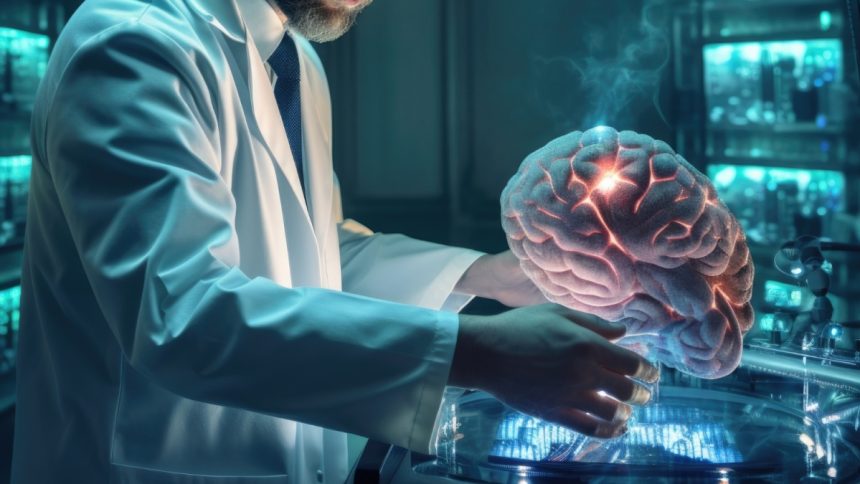Anatomic pathology is a cornerstone of modern medicine, providing the foundation upon which diagnoses are made and treatments are prescribed.
This article will examine anatomic pathology and outline its vital role in diagnosing diseases by examining tissues, organs, and cells.
Our journey will explore the techniques employed, the significance of this field in medical science, and its contribution to personalized patient care. We’ll also uncover future trends in integrating digital pathology with AI technology.
The Essence of Anatomic Pathology
Anatomic pathology is the study of tissue and organ samples to diagnose disease. It encompasses various techniques, including biopsies and autopsies, to obtain the samples necessary for examination.
Anatomic pathology utilizes many tools, from traditional histopathology to advanced molecular diagnostics. Techniques such as immunohistochemistry and molecular assays are crucial in identifying specific diseases by detecting unique proteins or genetic abnormalities.
The Processes in Anatomic Pathology
Diagnosing diseases begins with collecting tissue samples from patients. Depending on the situation, this can be achieved through more direct methods such as surgeries or less invasive approaches like needle biopsies.
Once these samples are collected, they are sent to the lab for a process known as histological preparation. This careful processing is crucial to preserving the tissue’s integrity, allowing for an accurate examination under a microscope.
Pathologists, equipped with specialized training, examine these prepared samples under a microscope. This detailed inspection allows them to identify any cellular abnormalities or changes in tissue architecture that signal the presence of diseases, ranging from infections and inflammatory conditions to more serious issues like tumors and cancers.
Diagnostic Techniques
The field of anatomic pathology only partially relies on traditional microscopy. It has integrated advanced diagnostic techniques to refine and improve disease diagnosis accuracy.
Immunohistochemistry is one such technique. It enables pathologists to detect and visualize specific proteins within tissue samples, indicating certain types of cancer or other diseases.
Molecular assays represent another frontier of diagnostic techniques, allowing for identifying genetic mutations that may underlie various conditions.
Together, these advanced methodologies significantly enhance the diagnostic capabilities of anatomic pathology, offering a more nuanced understanding of diseases at the molecular level and paving the way for targeted therapeutic strategies.
Scope
Anatomic pathologists are adept at examining and interpreting changes in tissues removed from virtually any part of the body:
- Skin – can show signs of diseases like eczema or skin cancer
- Digestive system – revealing conditions such as inflammatory bowel disease or colorectal cancer
- Respiratory system – issues like pneumonia or lung cancer can be identified
- Urinary system – uncovering problems like kidney stones or bladder cancer
- Nervous system – diagnosing disorders such as Alzheimer’s disease or brain tumors
- Musculoskeletal system – indicating conditions like osteoporosis or sarcomas
This wide-ranging capability allows anatomic pathologists to diagnose a vast array of conditions.
Their expertise extends beyond identifying common infections and inflammations. It extends to detecting rare genetic disorders that may affect individuals from birth and complex cancers that require detailed analysis to understand their behavior and how best to treat them.
Through meticulous examination of tissue samples under the microscope and employing advanced diagnostic techniques such as immunohistochemistry and molecular assays, anatomic pathologists provide crucial information that helps shape patient treatment plans.
Their work is integral to the multidisciplinary approach to patient care, bridging the gap between clinical presentations and the underlying pathology of diseases.
The Future of Anatomic Pathology
Beyond patient care, anatomic pathology is instrumental in medical research. By studying diseased tissues, researchers can uncover the mechanisms underlying various conditions, leading to the development of new treatments.
The insights gained from anatomic pathology fuel the advancement of personalized medicine, offering hope for more effective and targeted therapies.
At the moment, the field of anatomic pathology is on the cusp of transformation, with digital pathology and artificial intelligence poised to revolutionize how samples are analyzed and diagnosed.
According to NovoPath, a leader in Laboratory Information Systems, these innovations are set to dramatically improve healthcare systems by enhancing their predictive abilities. This means that diagnostics will become more efficient, medical data management will be transformed, and procedures will be faster and more accurate.
As technology advances, anatomic pathology faces both challenges and opportunities. Balancing technological integration with the nuances of human judgment will be key to future success.
Closing Thoughts
As we look to the future, integrating new technologies promises to enhance the precision and efficiency of anatomic pathology, though it is challenging. Further research and discussion are needed to fully realize this potential and address the complexities of integrating technology with traditional practices.
Lynn Martelli is an editor at Readability. She received her MFA in Creative Writing from Antioch University and has worked as an editor for over 10 years. Lynn has edited a wide variety of books, including fiction, non-fiction, memoirs, and more. In her free time, Lynn enjoys reading, writing, and spending time with her family and friends.















